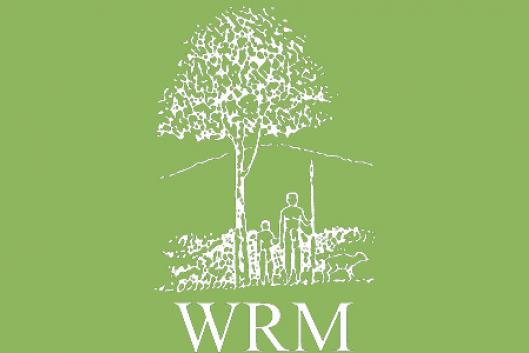Peter George is a farmer. Or, to be more accurate, he used to be a farmer. He bought Elangeni Farm in the cool highveld of Swaziland in the mid-1970s. He grew vegetables along with some eucalyptus and acacia trees. He drove twice a day to the local market to sell his cabbages. He had a few sheep, chickens, two cows and a half-blind sheep dog. After a few years he started a small fish farm, selling to local restaurants and hotels. He built his own house, got married and started a family.
When he bought the farm, there was plenty of water from the streams flowing down the slopes next to the farm. In the mid-1980s, the Usutu Pulp Company started planting the hills with pine plantations. George was forced to stop farming when the streams on his farm dried up. In 1988, the South African pulp and paper company SAPPI took a majority share in the Usutu pulp mill and the associated plantations.
By 1990, the water supply “had slowed to nothing and the house supply was well down," he explains. At first he thought that it might be caused by a drought. "But when the streams didn't flow even in the rainy season, there had to be a good reason," he says.
In November 2007, I was part of a WRM team that visited Swaziland. Together with colleagues from Friends of the Earth, who were in Swaziland for their annual meeting, we visited SAPPI's stinking, polluting Usutu pulp mill. The water in the stream flowing past the mill was jet black from the pulp mill's effluent.. "Sometimes the water is so hot you can't put your hand in it," says Thuli Makama of Yonge Nawe (Friends of the Earth Swaziland).
Peter George invited us to visit his farm the following day. When we arrived, workers were busy cutting down eucalyptus plantations on his land that had burned earlier in the year. Since the streams dried up, eucalyptus is one of the few crops he can grow. SAPPI's plantations near George's farm were black from fire - SAPPI lost about seven per cent of its plantations in Swaziland to fires this year.
We drove around the farm and George showed us where the Usutu Pulp Company had planted pines trees right through the streams which had supplied his farm with water. SAPPI started clearcutting the plantations in 2002 and since then the streams have started flowing again, although it took 18 months for one of the streams to recover. SAPPI has not replanted right up to the streams, but neither had it kept 30 metre-wide strips along the streams, which are required under Swaziland's regulations. In one place the trees were little more than 10 metres from a stream.
He pointed out the remains of a wall to us, all that is left of a homestead, now completely surrounded by the rows of SAPPI's pine trees. The hills "had been pastures and plough-lands for the local people as long as anyone could remember", George says.
In 1994, George told us, he wrote to SAPPI complaining about the lack of water on his farm. Seven months later, SAPPI replied, promising that they would look into the problem. SAPPI told George that the research would take two years. He's still waiting for the results of the research.
By 2004, he had started a legal process against SAPPI. George points out that it isn't just his land that dried out. "Other people's streams had dried out and it was not always drought that was to blame," he says.
In June 2006, the Soil Association's Woodmark certified SAPPI's Swaziland plantations as well managed under the Forest Stewardship Council system. Peter George met Woodmark's assessment team in March 2006. Woodmark's public summary of the assessment acknowledges that the meeting took place but gives few details. The public summary mentions that streams dried up but adds that they are now "back to normal". It fails to mention that for 12 years there was hardly any water on the farm. "The issue regarding the reduction of water flow caused by the planting of trees and the subsequent claim is 'sub judice' and is therefore [sic] under judicial consideration," comment Woodmark's assessors in the public summary.
Under the sub judice (from the Latin, "under judgement") rule in British law it can be an offence to publicly discuss current or upcoming court cases. The rule is intended to protect the right of defendants to a fair trail, but in this case Woodmark is hiding behind the sub judice rule to prevent legitimate debate.
Woodmark seems to want Peter George to just go away. When Woodmark's assessors revisited Swaziland in 2007 for their annual audit of SAPPI's plantations, they did not invite Peter George to their stakeholder meeting. Neither did they visit his farm.
George wrote to Woodmark in August 2007 pointing out that "SAPPI holds no planting permit for the blocks in question nor did they apply for one." George has a letter from SAPPI stating that the company has no planting permit for Block X - the land above Elangeni Farm. "In my opinion", George wrote to Woodmark, "SAPPI ought not to receive certification until this matter is settled. If such certification has been awarded, I will take steps to challenge it." Woodmark has not replied to George's letters.
The problems Peter George faces on his farm in Swaziland are not unique. WRM has reported many examples from the global South of streams and water supplies drying up after industrial tree plantations have been established. Instead of ignoring Peter George, Woodmark's "experts" should have the humility to realise they have a lot to learn from him.
By Chris Lang, http://chrislang.org
